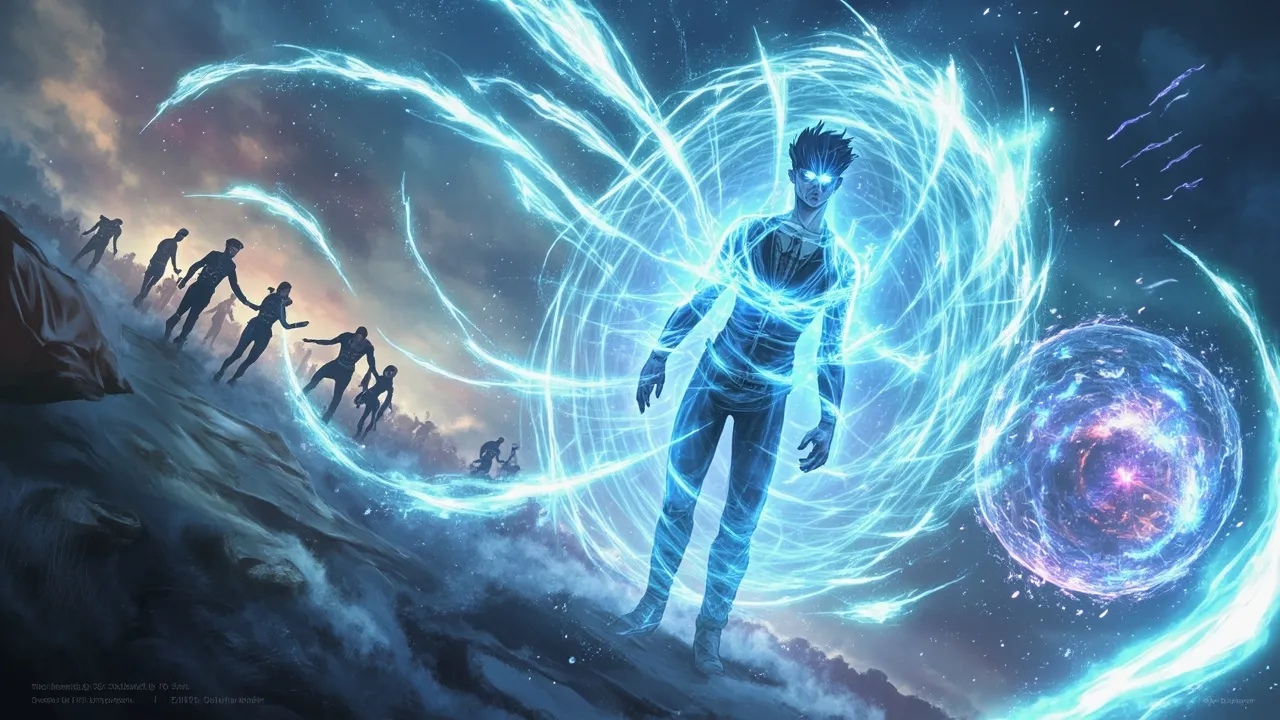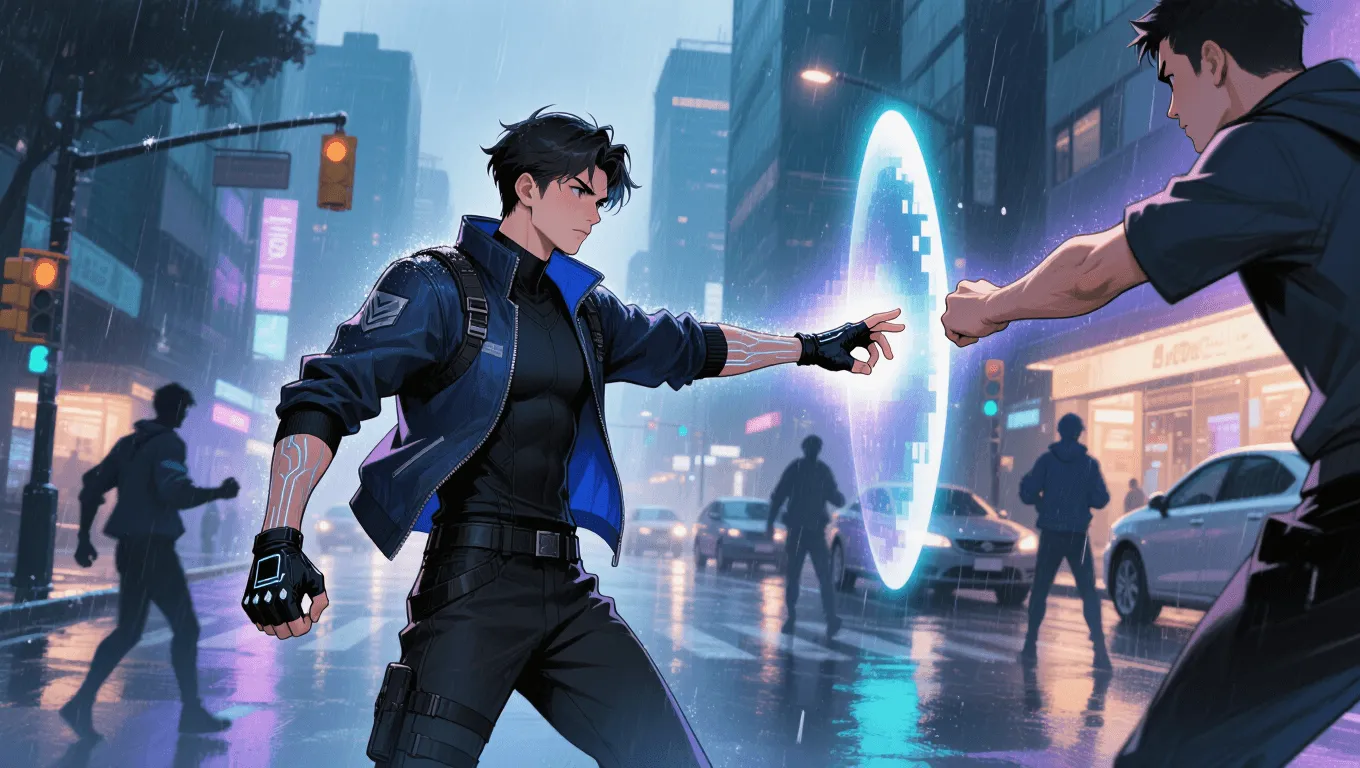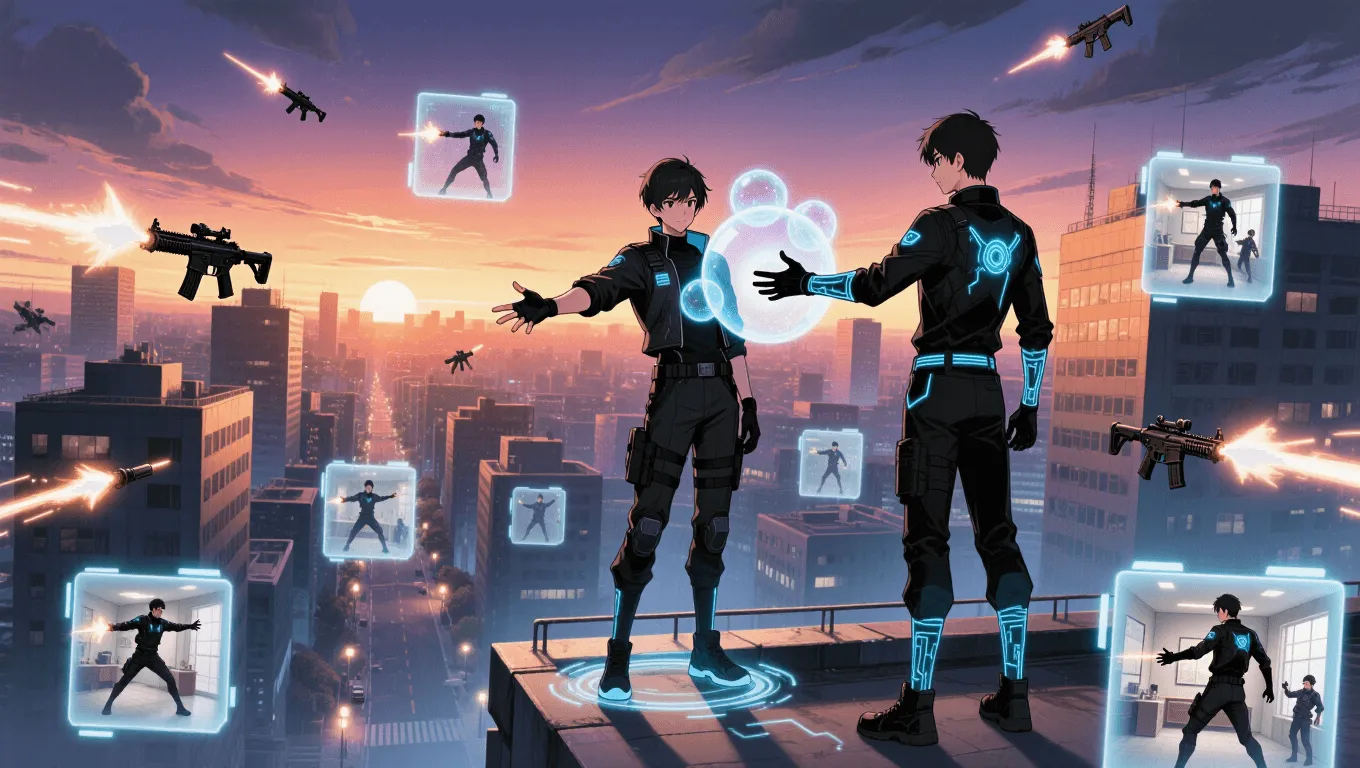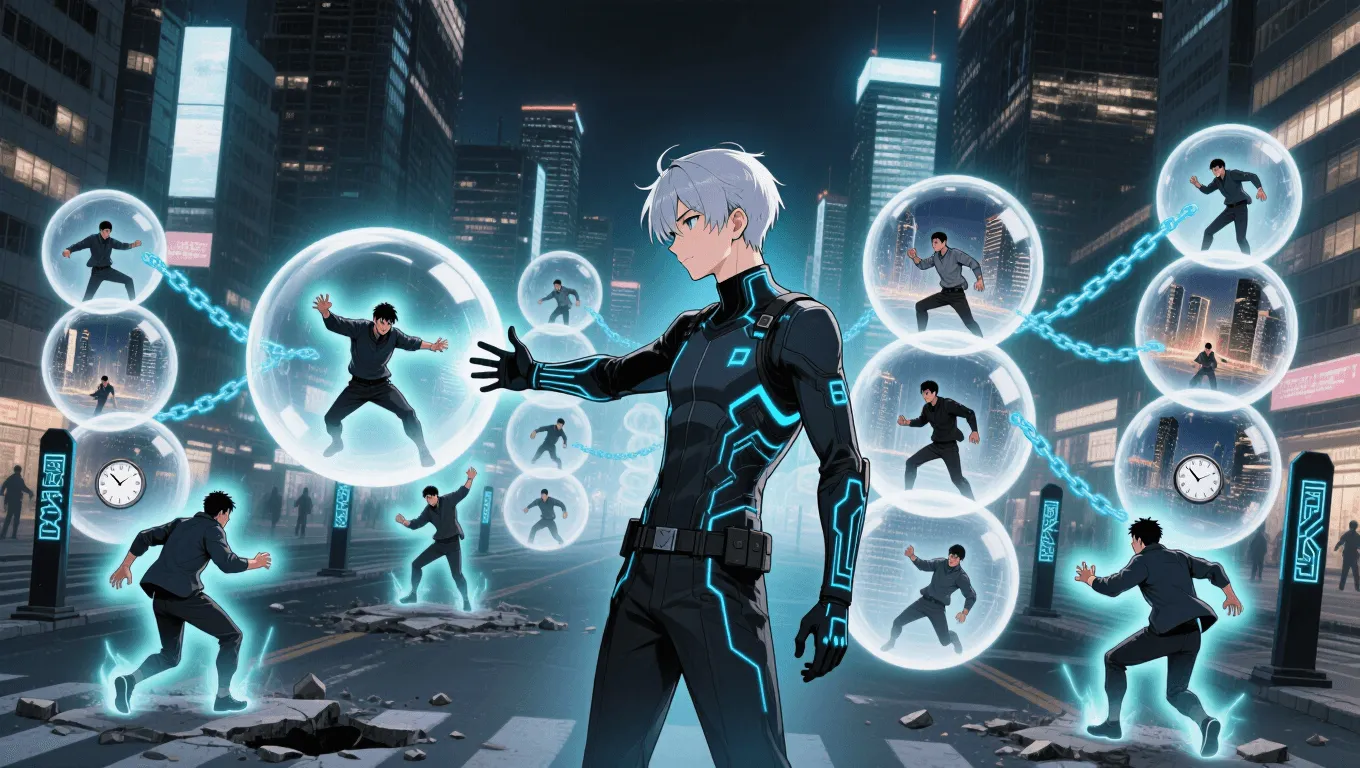Chrono-Distortion: Bend the Flow of Time

Chrono-Distortion Video Demo 🎬
Table of Contents
Chrono-Distortion is the superpower of warping how time flows for people, places, and objects. By stretching, compressing, pausing, or redirecting temporal flow, a user can slow enemies, accelerate allies, rewind short moments, or lock zones in stasis. In fiction and games, this power overlaps with time manipulation, chronokinesis, time dilation, temporal stasis, and time loops. For more powers like this, explore the Superpower Wiki and try your luck with the Random Superpower Generator.
What Is Chrono-Distortion
Chrono-Distortion alters the rate and direction of time without necessarily traveling through it. Instead of moving the user to another era, it reshapes the experience of the current moment—like pushing “fast forward,” “slow motion,” or “pause” on reality itself. Advanced users can create localized time bubbles, undo micro-mistakes with brief rewinds, or bring “future echoes” into the present for predictive insight. While it can look like magic, many versions are framed as precise manipulation of chronal energy fields or space-time curvature.
Core Abilities of Chrono-Distortion
Micro and Macro Time Dilation
Speed up or slow down the flow of time for a target or area. Micro dilation affects a single object (e.g., a bullet) while macro dilation covers rooms, streets, or battlefields.
Temporal Stasis
Freeze targets in a time-locked state. Stasis suspends motion and processes—bullets hang in the air, fires stop burning, and wounds neither worsen nor heal until stasis ends.
Instant Replay (Short Rewind)
Roll back the immediate past by a few seconds to a minute. This “do-over” is perfect for dodging a hit, re-aiming a shot, or re-trying a complex sequence.
Accelerated Action (Short Fast-Forward)
Push a target along its next few seconds rapidly—finishing tasks in a blink, forcing a seed to sprout, or moving a projectile to its end position sooner than expected.
Localized Time Bubbles
Create shimmering zones with custom time rules: slow zones for crowd control, quick zones to boost allies, or neutral “safe rooms” that isolate combatants from outside events.
Time Edge on Projectiles
Impart chronal shear that ages or “over-cranks” a projectile mid-flight. Arrows can strike with old, brittle shafts that explode into dust upon impact, or converge faster than expected.
Temporal Phasing
Desynchronize personal time to slip through slow-moving obstacles, pass between raindrops, or reduce collision chances. At higher mastery, limited intangibility becomes possible.
Predictive Echoes
Sample near-future “echo frames” to read likely outcomes seconds ahead. This functions like short-range precognition but only within the user’s manipulation window.
Chronal Anchoring
Plant a personal anchor state. If the timeline wobbles (from a rewind or enemy distortion), the user snaps back to the anchored status—health, position, and gear included.
Age/Entropy Skew (Advanced)
Nudge local entropy to accelerate aging or preservation. This is risky and typically restricted; ethical users avoid long-term biological harm.
Temporal Cleanse
Purge hostile chronal effects—undoing enemy slows, stuns derived from time warp, or harmful loops. Works like dispelling time-based debuffs.
Application / Tactical Advantages in Combat
-
Crowd Control Mastery: Slow zones blunt rushes, scatter formations, and create windows for precise strikes. Stasis pinpoints high-value threats for focus fire.
-
Second-Chance Plays: Short rewinds let a user “practice until perfect” in real-time—repositioning, re-blocking, and re-aiming within tight frames.
-
Tempo Buffs for Allies: Quick zones accelerate reloads, spell casts, or healing actions, turning coordinated pushes into decisive breakthroughs.
-
Projectile Governance: Warp bullets, beams, and blades—detonate early, skip frames to bypass shields, or stall a barrage mid-air to create temporal cover.
-
Objective Control: Freeze a doorway, vault, or control point to stall attackers. Time bubbles can also isolate a boss for safe crowd management.
-
Information Edge: Predictive echoes reveal incoming ambush angles, feints, and parries seconds ahead.
-
Damage Mitigation: Rewind after a critical mistake to restore positioning or undo a miscast. Temporal cleanse strips enemy slows and distortions.
-
Environmental Dominance: Stasis flames, calm storms, or pause machinery to neutralize hazards that would otherwise shape the battlefield.
Level: Level 1 🏙️, Level 2 🌇, Level 3 🌃
Level 1 🏙️ — Street-Scale Distorter

-
Scope: A few meters around the user or a single target.
-
Tools: Minor slow/haste, a one-time “instant replay” up to ~3 seconds, beginner predictive echoes.
-
Combat Profile: Skirmisher/duelist who wins by creating micro-openings—pausing a punch, speeding a reload, or nudging a dodge window.
-
Risks: Overuse causes chrono-sickness—headaches, vertigo, and jet-lag-like fatigue.
Level 2 🌇 — District-Scale Tactician

-
Scope: Room-to-block coverage; multiple simultaneous time bubbles.
-
Tools: Reliable stasis on single targets, mid-length rewinds (~5–10 seconds) with cooldown, projectile time edge, stronger predictive echoes.
-
Combat Profile: Controller/field general; dictates enemy tempo, enables team bursts, and counters speedsters with layered slow zones.
-
Risks: Timeline strain—excessive rewinds spawn desync artifacts (visual tearing, echoing footsteps, delayed sounds) that can reveal the user’s position.
Level 3 🌃 — City-Scale Chronarch

-
Scope: Multi-block arenas; stacked bubbles with different rules; event-phase manipulation.
-
Tools: Group stasis, chained rewinds, advanced temporal phasing (brief intangibility), selective entropy skew, and robust chronal anchoring.
-
Combat Profile: Battlefield architect; turns assaults into choreographed set pieces, collapsing enemy timing while fast-tracking allied plays.
-
Risks: Paradox proximity—large manipulations risk collateral anomalies (looped civilians, aged infrastructure). Strict ethical discipline and anchors are essential.
Limitations of Using the Chrono-Distortion
-
Energy and Focus Cost: Precision edits drain stamina and concentration. Multi-bubble control ramps cost sharply.
-
Short Windows, Not True Time Travel: Most versions only shift local tempo or rewind brief moments; they don’t rewrite entire histories.
-
Chrono-Sickness: Overuse can cause nausea, migraines, time vertigo, or delayed motor responses. Severe cases include blackouts.
-
Anchor Dependency: Without a chronal anchor, heavy edits can backfire—items go missing, positions slip, or memory desyncs occur after a rewind.
-
Causality Resistance: Some entities or artifacts are “time-hard”—they ignore slows, stasis, or rewinds, forcing the user to rely on conventional tactics.
-
Echo Noise and Uncertainty: Predictive echoes reflect probabilities, not guarantees. Jamming, quantum noise, or enemy countermeasures reduce reliability.
-
Cooldowns and Heat: Equipment-based distorters overheat; innate users still require neuro-chronal cooldown to avoid cognitive overload.
-
Ethical and Legal Boundaries: Aging foes, looping civilians, or tampering with forensic timelines can breach codes of conduct or laws.
Weakness against what other superpowers
-
Reality Warping: Rewrites the rules that Chrono-Distortion relies on, nullifying precise timing edits.
-
Probability Manipulation: Skews outcomes so predicted futures fail, turning echoes into traps.
-
Precognition / Foresight: True long-term sight outclasses second-ahead echoes; the opponent plays around anticipated rewinds and slows.
-
Time Immunity / Temporal Anchors: Opponents anchored outside local time shrug off stasis and dilation.
-
Anti-Magic / Power Nullification Fields: Shut down chronal effects or suppress their strength and duration.
-
Quantum Phase or Dimensional Shift: Targets operating slightly out-of-phase cannot be cleanly bubbled or rewound.
-
Superspeed with Independent Time Sources: Speedsters drawing from external “time engines” (e.g., a unique field) can sprint through slow zones or escape stasis edges.
-
Entropy Control: Users who command decay/preservation can counter age-skew or stabilize an area against distortions.
Synergistic Power Combos
-
Gravity Manipulation + Chrono-Distortion: Stack gravity wells with slow bubbles to create inescapable zones; add stasis for precision takedowns.
-
Teleportation / Short-Range Blinks: Freeze a target, reposition instantly, then drop the stasis for a perfectly lined follow-up.
-
Barrier or Force Fields: Time bubbles overlaid on shields form safe pockets for triage, reloads, or spell channels.
-
Technopathy / Time-Stamped Sensors: Record high-speed events, then rewind to analyze frames for flawless counters.
-
Illusion Casting: Distort perception timing while masking real movement; illusions sell “fake future echoes” that mislead foes.
-
Healing / Regeneration: Use stasis to halt bleeding and buy time for healers; fast-forward natural recovery in controlled increments.
-
Elemental Control (Fire/Lightning/Ice): Pause hazards midair for area denial, or fast-forward ignition and discharge sequences for synchronized bursts.
Known Users
While “Chrono-Distortion” is a catch-all term, many iconic characters demonstrate similar time-warping effects:
-
Kang the Conqueror — A temporal warlord whose technology and strategy revolve around mastering timelines.
-
The Flash — A speedster whose extreme velocity can generate localized time dilation and time travel effects under certain conditions.
-
Doctor Strange — Often employs temporal spells and relics in specific storylines to loop, rewind, or preview outcomes.
-
Cable — A soldier linked to time-displaced tech, frequently interacting with altered temporal states.
-
Sakuya Izayoi — A pop-culture example known for pausing or slowing time in combat scenarios.
Ready to dive deeper into related abilities? Visit the Superpower Wiki or spin up a new idea with the Random Superpower Generator.
